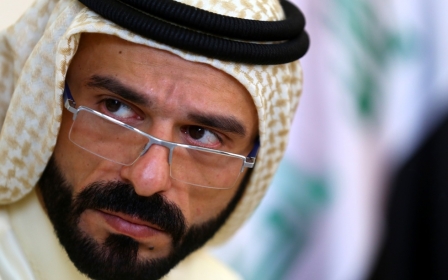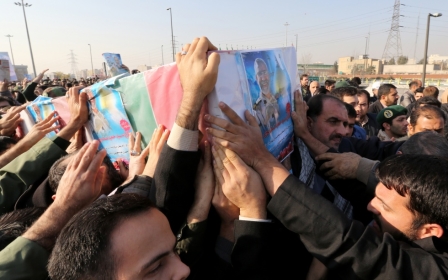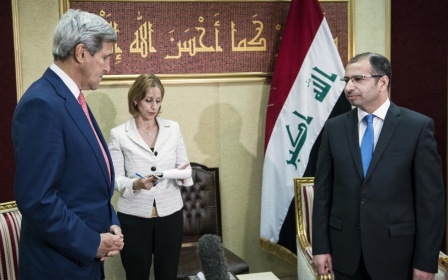For US soldiers, new Iraq mission brings unexpected return

By W.G. Dunlop
TAJI BASE, Iraq - As Sergeant Michael Lair went from base to base in 2011, moving American gear to Kuwait ahead of the US withdrawal from Iraq, it seemed unlikely he would be returning.
The United States' nearly nine-year war in the country was winding down, and the devastating violence that killed tens of thousands of Iraqis and thousands of American troops was at its lowest level in years.
But three years later, Lair is on his third Iraq deployment, this time as part of a mission to ready Iraqi soldiers for combat against the Islamic State (IS), which has overrun large parts of the country.
"I didn't think we were coming back," Lair says, standing on a muddy road lined with sections of concrete blast wall in the massive Taji base complex north of Baghdad, an M4 assault rifle held across his chest.
"We would go up through Iraq to all the FOBs (forward operating bases). We would load up all the equipment and take it to the port in Kuwait... by road," he says of the run-up to the withdrawal.
"It was kind of a big stepping stone," he says. "We're taking our stuff with us - it's a pretty good sign."
But when he deployed to Kuwait in June this year as IS drove south toward Baghdad, sweeping Iraqi forces aside, it became clear another mission was likely.
"I was just telling myself, hey, get ready to go, 'cause I guarantee that we're not just gonna sit by and watch it happen," he says.
'A habit'
Lair also served in Afghanistan, and arriving back in Iraq was ultimately a return to the life he has known for years.
"It was comfortable, as weird as I guess that sounds," he says. "This is my fourth deployment, so this is what I'm used to. I don't know anything different.
"This has become a habit."
Lair is one of about 180 US military personnel now living at Taji, a number that is set to rise, says Captain Tyler Hitter.
The base is one of five sites where the US and its allies aim to train 5,000 military personnel every six to eight weeks in "the bare minimum basics that are needed for counter-attacking," says Major General Dana Pittard.
The US spent billions training and equipping Iraqi forces, but that relationship was scaled back after the 2011 withdrawal.
American soldiers say Iraq's troops did not carry out the subsequent training needed to maintain their skills and that, combined with flawed leadership, helped lead to the IS debacle.
Much of Taji has been in use by the Iraqi army since US troops departed, but it is still full of signs of the past American presence, from basketball goals to an empty can of Copenhagen dip tobacco - a favourite of US soldiers - still sitting in an empty hanger.
Murals accompanied by unit nicknames cover a wall near rows of empty white housing units, and the 1st Cavalry Division's unit patch is painted on a water tower overlooking the base.
'Like starting over'
Staff Sergeant Marlon Daley, another soldier at Taji, who has been sent to Iraq three times, including during the initial 2003 invasion, did not expect to return after leaving in 2011.
He describes the IS takeover of Iraq's second city Mosul, an area where he was twice deployed, as "pretty shocking".
But "I wanted to come here," he says. "Most soldiers, that's what they want to do, is deploy and make a difference."
Command Sergeant Major Robert Keith is now on his fifth mission to Iraq - a series that has spanned from 2003 to 2011, and now 2014.
"I didn't think I was gonna come back. Everything was shutting down, everybody was pushing back down into Kuwait," Keith says of 2011.
Over the years, "I've seen a lot of progress and... a lot of changes," and having that rolled back by IS is "frustrating," he adds.
It's like "trying to reinvent the wheel, when you establish so much and we come back, it's like starting over again," he says.
But he is glad to be back nonetheless.
"I enjoy coming to Iraq, the people are awesome here, the hospitality," Keith says. "People call me crazy when I say that."
Middle East Eye propose une couverture et une analyse indépendantes et incomparables du Moyen-Orient, de l’Afrique du Nord et d’autres régions du monde. Pour en savoir plus sur la reprise de ce contenu et les frais qui s’appliquent, veuillez remplir ce formulaire [en anglais]. Pour en savoir plus sur MEE, cliquez ici [en anglais].




